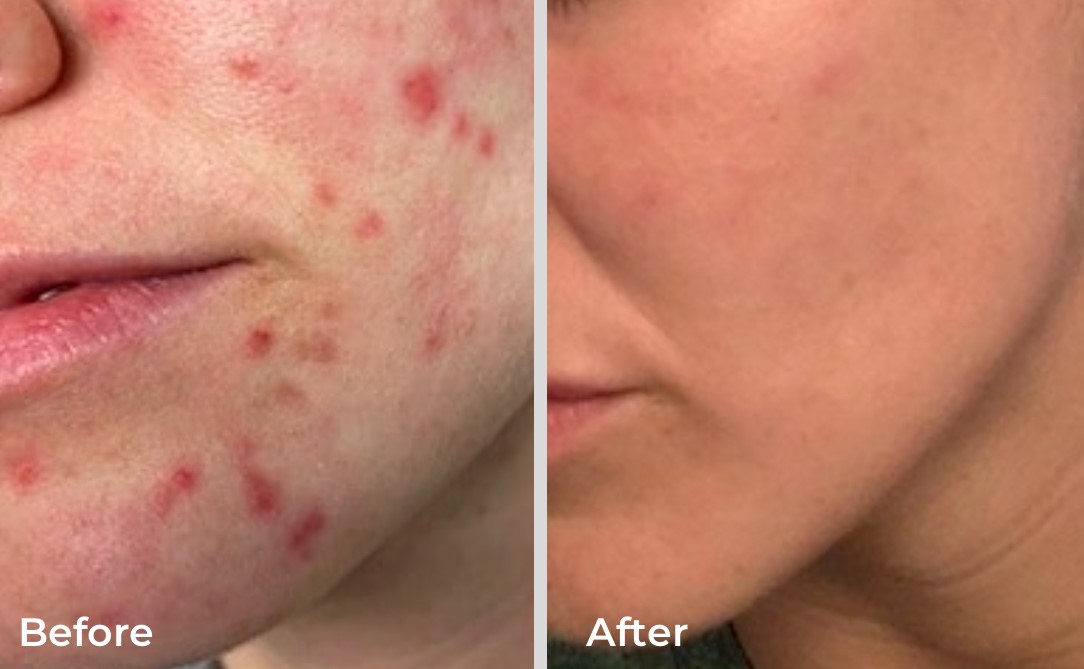IPL-Intense Pulse Light

ipl-intense pulse light
Rejuvenate Your Skin, Improve Pigment, and Unveil Your Radiance
- Rejuvenation
- Pigmentation
- Rosacea
- Poikilodeema
- Acne
- Skin Types I-IV only

Spectrum Long Pulsed YAG Laser For Vascular
What is a Long Pulsed YAG (LPY) Laser?
The 1064nm Long Pulsed YAG Laser delivers precise treatment for visible vessels, broken capillaries, spider veins, and vascular lesions using laser energy. Tailored to individual skin conditions and desired results, LPY laser treatment is suitable for all skin areas.
What Makes LPY Unique and How Does It Work?
Spectrum’s long pulsed Yag laser diminishes the appearance of veins on the face and legs by delivering laser energy that is absorbed by the veins, causing them to collapse and seal shut. This quick and effective procedure ensures minimal discomfort and promotes vein elimination.
Indications for LPY?
LPY is effective for treating various vascular lesions including telangiectasias, spider veins, hemangiomas, and leg veins.
Expectations and Pre/Post-Treatment Care?
Discomfort during treatment is minimal, akin to the snap of a rubber band. Pre-treatment, discontinue blood-thinning medications/supplements unless prescribed by a doctor. Post-treatment, expect some swelling and irritation, with cold packs recommended to reduce redness/swelling. Avoid sun exposure and adhere to sunscreen usage for optimal healing and prevention of damage.
Treatment Duration and Recovery?
Treatment time varies depending on the area size, typically taking 15 minutes or less per area with no downtime required. Best results are typically seen after 1-2 treatments, with leg vein resolution taking 8-12 weeks. A series of 3 treatments is recommended for optimal results.
Exercise and Safety?
There is no downtime following LPY treatment, and patients can resume exercise immediately. LPY treatment is safe for skin types I-III.
Cost and Candidate Eligibility?
Treatment costs are based on the treated area and number of sessions required. Candidates for LPY laser treatments vary based on factors like age, overall health, extent of veins, symptoms, goals, and skin type. Common candidates include those with cherry angiomas, matted and superficial vessels, or visible spider veins.

Spectrum IPL
What is IPL?
IPL, or Intense Pulsed Light, is a versatile cosmetic treatment addressing aging signs, pigmentation issues, vascular concerns, acne, and unwanted hair. It harnesses broadband light to penetrate skin layers without downtime, offering a quick, minimally discomforting procedure.
Unique Aspects of IPL
Unlike lasers, IPL devices emit multiple wavelengths, treating various skin conditions simultaneously. It enhances skin tone, reduces blemishes, and tackles pigmentation issues like age spots, moles, and rosacea.
Indications for IPL
IPL effectively addresses a range of concerns including wrinkles, sun damage, uneven pigmentation, scars, spider veins, rosacea, and hair reduction.
Procedure and Mechanism
IPL functions similarly to lasers by targeting chromophores in the skin, converting light energy into heat to damage specific areas. It differs by delivering multiple wavelengths in each pulse, effectively treating diverse skin components without excessive energy levels.
Anti-aging Benefits
IPL stimulates collagen production, improving skin texture and reducing fine lines and wrinkles.
Treatment Experience
Patients may feel a mild pinching sensation during the procedure, described as akin to a snap from an elastic band. Discomfort is minimal and very tolerable.
Treatment Duration and Recovery
Each session lasts approximately 30-45 minutes, with results typically visible after 4-6 weeks and optimal outcomes achieved with 2-3 treatments. Expect some redness, swelling, and temporary darkening of pigmented spots during recovery.
Post-Treatment Care
Following treatment, mild cleansers and moisturizers are recommended, along with sun protection. Avoiding certain activities and products aids in swift recovery.
Expectations and Longevity
Results manifest gradually, with pigmented spots fading within a week and optimal results seen within 2-3 months post-treatment. Depending on the condition treated, 3-4 sessions spaced four weeks apart are typically recommended.
Side Effects
Potential side effects include redness, swelling, bruising, itching, and peeling.
